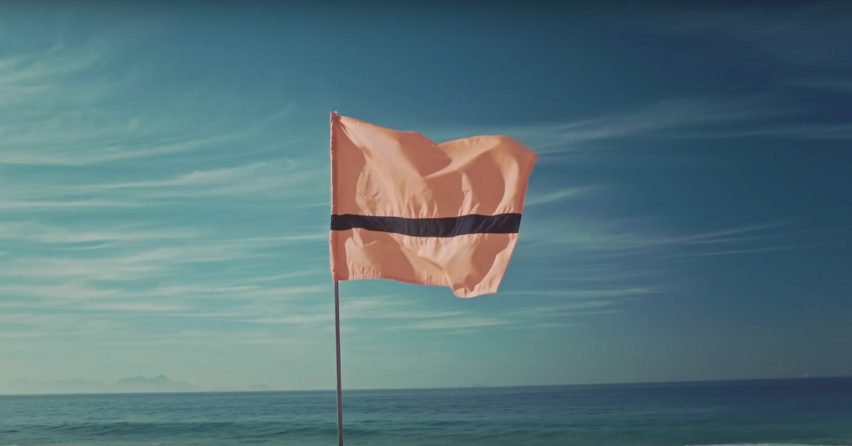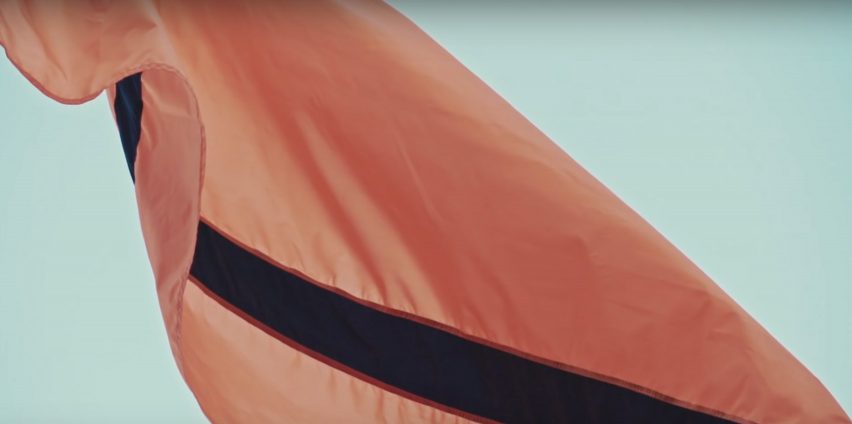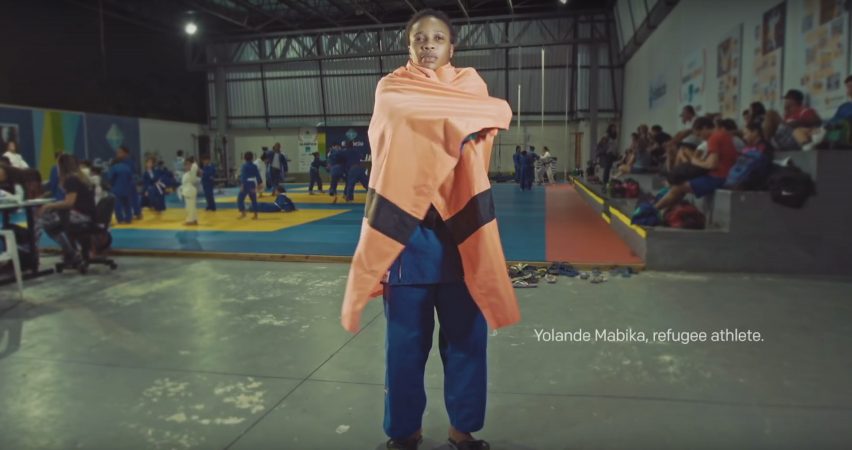Refugees create alternative flag for their Rio 2016 Olympic team
Rio 2016: an orange and black flag representing the life jackets worn by asylum seekers has been designed for the Refugee Olympic Team (+ movie).
Newly formed organisation Refugee Nation commissioned the flag in hopes it would be used by the team – the first group of Olympic competitors to be entirely made up of refugees.

The flag was imagined by Yara Said, an artist and Syrian refugee now living in Amsterdam. She used black and orange to represent the colour of life jackets worn by refugees when making dangerous sea crossings.
"Black and orange is a symbol of solidarity for all those who crossed the sea in search of a new country," said Said. "I myself wore one, which is why I so identify with these colours and these people."
The 2016 summer games in Rio marks the first time that an Olympic team of refugees has competed. International Olympic Committee president Thomas Bach announced in March that the athletes would be competing in the Rio Olympics in the wake of the worldwide refugee crisis.
During the opening ceremony, the 10 athletes from four different countries walked under the Olympic flag to the Olympic anthem. Although the refugee team will continue to compete under the Olympic flag during Rio, Refugee Nation hopes the flag will become part of the team's identity for future games.

Started by Amnesty International together with refugees, the organisation also produced an anthem, which was written by composer and Syrian refugee Moutaz Arian.
"By giving these athletes a sense of national team, a flag and an anthem to call their own, we're sending a powerful message to all the refugees in the world," said a spokesperson from Amnesty International. "We're saying that every human being has the right to have a place to call home."

The competing athletes are Syrian swimmers Rami Anis and Yusra Mardini; South Sudanese runners Yiech Pur Biel, James Nyang Chiengjiek, Anjelina Nada Lohalith, Rose Nathike Lokonyen and Paulo Amotun Lokoro; Ethiopian marathon runner Yonas Kinde; and Congolese judokas Yolande Bukasa Mabika and Popole Misenga.
The refugee crisis has become an increasingly important topic for architects and designers as the situation has worsened over the past few years. They have presented a multitude of proposals for temporary shelters, including rapidly deployable hexagonal dwellings and adaptable systems.
Dutch organisation What Design Can Do (WDCD) also launched a Refugee Challenge to encourage designers to submit ideas to help the crisis.
In an opinion piece for Dezeen, WDCD founder Richard van der Laken said that the smallest intervention could help improve the conditions faced by the unprecedented number of refugees flooding Europe.